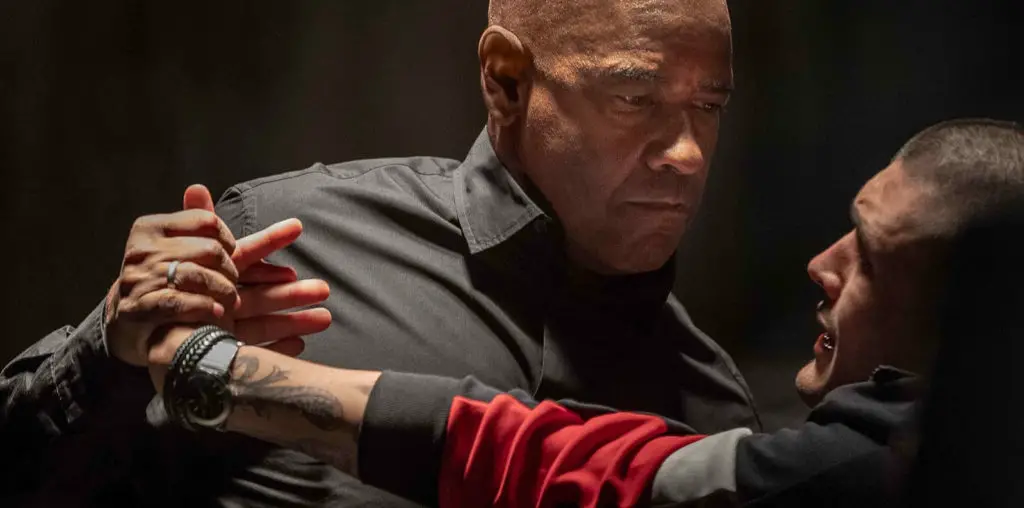
I have little to no interest in the second Shrek movie. Mike Myers has overstayed his welcome (which ended after “Austin Powers 2”) and I never particularly cared for Cameron Diaz (at least I don’t need her to talk) and her “slightly ditzy but oh-so-playful chick” routine got old before it was new.
Don’t even get me started on Eddie Murphy. I once remarked to a friend of mine that somewhere around 1992 his manager must have come up to him like Ving Rhames visiting Bruce Willis in Pulp Fiction. “Somewhere around 1995, you’re going to start doing family-friendly junk that demeans everything you’ve tried to do in your career to that point. You may feel a slight sting. That’s pride f*****g with you. F**k pride. Pride only hurts, it never helps.”
THE TRAILER
Not bad, but there’s absolutely nothing original in there. There’s more adult-oriented humor (a CGI Joan Rivers on a red carpet) more scenes of classic fairy tale characters (Gingerbread Man and Pinocchio both make appearances) and, as is the case with most sequels, a brief glimpse of the expanded cast, including John Cleese as Cameron Diaz’s father and Antonio Banderas as Puss in Boots.
My basic sense is that the studio isn’t even trying to attract kids with this one. They are aiming squarely at the adult demographic, counting on them to bring their kids with them or simply send the kids because they had seen the first one. There’s nothing about this trailer, to my eye, that sets its sites on the under 12 crowd.
THE TEASER POSTER
The teaser poster basically takes the same concept as “Ghostbusters 2” and applies it to Shrek. Instead of a ghost holding up two fingers, we have the number two with Shrek’s weird horn/ear thingies. Not very original, but it is effective at its core function of letting people know there’s a second one coming. Again, they are playing into adult or at least older children’s concept recognition abilities.
THE POSTER
Boring. All the characters poking their heads out at us. If more then 15 minutes elapsed between the time the concept was conceived and the time the finished product was locked up, the graphic designers and marketing department were playing ping-pong.
THE WEBSITE
Here’s where they start trying to appeal to kids. The site is very Flash-animation intensive. The central feature seems to be a “Find the Secret Ingredients” game, narrated by Pinocchio. I didn’t bother to play the game since, quite frankly, I have my intelligence insulted enough each day without actively seeking out new sources. If you’re not interested in this game, skip the section labeled “Travel Papers” and go immediately to “About the Movie”.
Even then, the entire “Fun and Games” section is filled with Shrek-ified versions of basic web-games (Memory is now “Think Donkey Think, for example). “Media and Downloads”, where I was hoping to find posters, backgrounds and such, simply contained the teaser trailer and two theatrical trailers.
“Meet the Characters” and “The Story” sections are pretty self-explanatory. “Behind the Fairytale” is where some of the filmmakers get their due, though portions of “Raising the Bar Again” read like a press release for Hewlett Packard. I’d be willing to bet that the quotes attributed to Myers, Diaz and Murphy throughout the site were concocted by press agents. They read to me like the “too good to be true” quotes that every interviewer dreams about but knows will never happen. There are too many quips and funny asides in there. Even money says the cast doesn’t even know they’re on the site.
There are also the usual links to the information/purchasing options on the soundtrack (complete with SmathMouth’s “All-Star”! Again! Just like three years ago!), Shrek 3-D DVD and movie tickets.
It makes sense that the site is more geared to kids considering how internet usage demographics are shifting. Adults aren’t going to get much out of it.
OVERALL
It’s interesting to note the different demographic targets among the media types. The Internet is obviously aimed at kids whereas traditional media is looking to snare adults. Not an overly original campaign from my point of view which, quite frankly, doesn’t bode well for the movie.
As moviemaking costs increase, the pressure to successfully market those movies becomes greater. In an attempt to show how marketers are trying to put the most hinders in the theater seats, Chris Thilk breaks down why some movie campaigns work and some don’t. The posters for “The Rocketeer” and “Unforgiven” remain two of his all-time favorites. For Chris’ ongoing movie journal and other various musings, visit his Random Thoughts blog.
